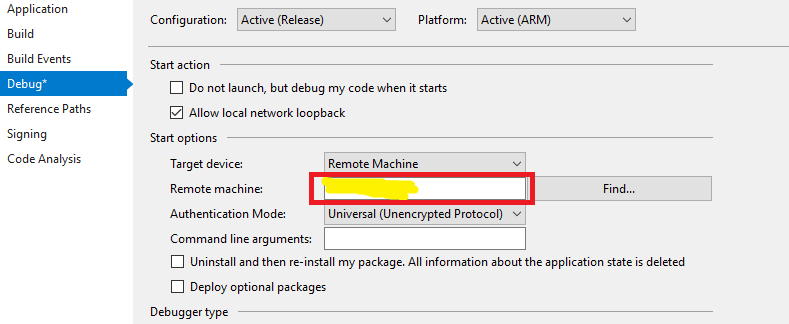We can set the IP address of Remote machine and authentication mode in Visual Studio 2017 by following the below steps:
- Open the project which you want to deploy on remote machine in Visual Studio
- Right click and select properties.
- Select the debug tab
- In the marked yellow area you can enter the appropriate IP address of the IoT Device
Save and close the properties window.
The IP address will be set to whatever IP address you would mention in the Remote machine field above.
You can also set other fields in the properties page such as Authentication mode.


